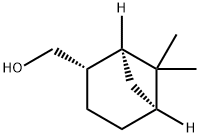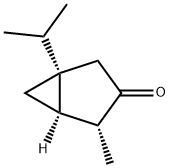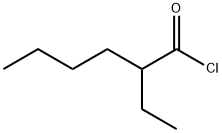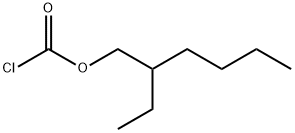2-Methylhexane
Synonym(s):Isoheptane
- CAS NO.:591-76-4
- Empirical Formula: C7H16
- Molecular Weight: 100.2
- MDL number: MFCD00009487
- EINECS: 209-730-6
- SAFETY DATA SHEET (SDS)
- Update Date: 2024-12-18 14:08:57

What is 2-Methylhexane?
Chemical properties
clear colorless liquid
Physical properties
Clear, colorless, flammable, watery liquid with an odor similar to pentane, 2-methylpentane, 3- methylpentane, hexane, and 3-hexane. An odor threshold concentration of 420 ppbv was reported by Nagata and Takeuchi (1990).
The Uses of 2-Methylhexane
2-Methylhexane is mainly used as a model iso-alkane in studies relating to iso-alkane oxidation, vapor-liquid phase equilibria of heptane isomers and catalytic cracking.
The Uses of 2-Methylhexane
Organic synthesis.
Hazard
Flammable, dangerous fire risk, explosivelimits in air 1–6%.
Source
Schauer et al. (1999) reported 2-methylhexane in a diesel-powered medium-duty truck
exhaust at an emission rate of 570 μg/km.
Schauer et al. (2001) measured organic compound emission rates for volatile organic
compounds, gas-phase semi-volatile organic compounds, and particle-phase organic compounds
from the residential (fireplace) combustion of pine, oak, and eucalyptus. The gas-phase emission
rate of 2-methylhexane was 2.6 mg/kg of pine burned. Emission rates of 2-methylhexane were not
measured during the combustion of oak and eucalyptus.
California Phase II reformulated gasoline contained 2-methylhexane at a concentration of 15.3
g/kg. Gas-phase tailpipe emission rates from gasoline-powered automobiles with and without
catalytic converters were 2.88 and 372 mg/km, respectively (Schauer et al., 2002).
Environmental Fate
Biological. Riser-Roberts (1992) reported 2- and 5-methylhexanoic acids as metabolites by the
microorganism Pseudomonas aeruginosa.
Photolytic. Based on a reported photooxidation reaction rate constant of 6.80 x 10-12
cm3/molecule?sec with OH radicals, the half-life of 2-methylhexane is 25 h (Altshuller, 1990).
Chemical/Physical. Complete combustion in air produces carbon dioxide and water vapor. 2-
Methylhexane will not hydrolyze because it does not contain a hydrolyzable functional group.
Purification Methods
Purify it by azeotropic distillation with MeOH, then wash it with water (to remove the MeOH), dry it over type 4A molecular sieves and distil it. [Beilstein 1 IV 397.]
Properties of 2-Methylhexane
| Melting point: | -118 °C |
| Boiling point: | 90 °C(lit.) |
| Density | 0.679 g/mL at 25 °C(lit.) |
| vapor pressure | 2.27 psi ( 37.7 °C) |
| refractive index | n |
| Flash point: | 25 °F |
| storage temp. | Flammables area |
| solubility | Soluble in acetone, alcohol, benzene, chloroform, ligroin, and ether (Weast, 1986). Miscible with
liquid aliphatic hydrocarbons. |
| form | Liquid |
| color | Clear colorless |
| explosive limit | ~7% |
| Water Solubility | 3.8 mg/L at 23 °C (Coates et al., 1985) 2.54 mg/kg at 25 °C (shake flask-GLC, Price, 1976) |
| BRN | 1696856 |
| Henry's Law Constant | 0.512 atm?m3/mol at 26.9 °C, 0.311 at 35.0 °C, 0.256 at 45.0 °C (dynamic headspace, Hansen et al., 1995) |
| Dielectric constant | 1.9(20℃) |
| CAS DataBase Reference | 591-76-4(CAS DataBase Reference) |
| EPA Substance Registry System | 2-Methylhexane (591-76-4) |
Safety information for 2-Methylhexane
| Signal word | Danger |
| Pictogram(s) |
 Flame Flammables GHS02  Exclamation Mark Irritant GHS07  Health Hazard GHS08  Environment GHS09 |
| GHS Hazard Statements |
H225:Flammable liquids H304:Aspiration hazard H315:Skin corrosion/irritation H336:Specific target organ toxicity,single exposure; Narcotic effects H410:Hazardous to the aquatic environment, long-term hazard |
| Precautionary Statement Codes |
P210:Keep away from heat/sparks/open flames/hot surfaces. — No smoking. P233:Keep container tightly closed. P273:Avoid release to the environment. P331:Do NOT induce vomiting. P301+P310:IF SWALLOWED: Immediately call a POISON CENTER or doctor/physician. P303+P361+P353:IF ON SKIN (or hair): Remove/Take off Immediately all contaminated clothing. Rinse SKIN with water/shower. |
Computed Descriptors for 2-Methylhexane
New Products
Tert-butyl bis(2-chloroethyl)carbamate 4-Methylphenylacetic acid N-Boc-D-alaninol N-BOC-D/L-ALANINOL N-octanoyl benzotriazole 3-Morpholino-1-(4-nitrophenyl)-5,6-dihydropyridin- 2(1H)-one Furan-2,5-Dicarboxylic Acid DIETHYL AMINOMALONATE HYDROCHLORIDE 1,1’-CARBONYLDIIMIDAZOLE R-2-BENZYLOXY PROPIONIC ACID 1,1’-CARBONYLDI (1,2-4 TRIAZOLE) N-METHYL INDAZOLE-3-CARBOXYLIC ACID (2-Hydroxyphenyl)acetonitrile 4-Bromopyrazole 5-BROMO-2CYANO PYRIDINE 5,6-Dimethoxyindanone 5-broMo-2-chloro-N-cyclopentylpyriMidin-4-aMine 2-(Cyanocyclohexyl)acetic acid 4-methoxy-3,5-dinitropyridine 1-(4-(aminomethyl)benzyl)urea hydrochloride 2-aminopropyl benzoate hydrochloride diethyl 2-(2-((tertbutoxycarbonyl)amino) ethyl)malonate tert-butyl 4- (ureidomethyl)benzylcarbamate Ethyl-2-chloro((4-methoxyphenyl)hydrazono)acetateRelated products of tetrahydrofuran








You may like
-
 2-Methylhexane CAS 591-76-4View Details
2-Methylhexane CAS 591-76-4View Details
591-76-4 -
 2-Methylhexane CAS 591-76-4View Details
2-Methylhexane CAS 591-76-4View Details
591-76-4 -
 1975-50-4 98%View Details
1975-50-4 98%View Details
1975-50-4 -
 2-HYDROXY BENZYL ALCOHOL 98%View Details
2-HYDROXY BENZYL ALCOHOL 98%View Details
90-01-7 -
 2-Chloro-1,3-Bis(Dimethylamino)Trimethinium Hexafluorophosphate 221615-75-4 98%View Details
2-Chloro-1,3-Bis(Dimethylamino)Trimethinium Hexafluorophosphate 221615-75-4 98%View Details
221615-75-4 -
 14714-50-2 (2-Hydroxyphenyl)acetonitrile 98+View Details
14714-50-2 (2-Hydroxyphenyl)acetonitrile 98+View Details
14714-50-2 -
 118753-70-1 98+View Details
118753-70-1 98+View Details
118753-70-1 -
 733039-20-8 5-broMo-2-chloro-N-cyclopentylpyriMidin-4-aMine 98+View Details
733039-20-8 5-broMo-2-chloro-N-cyclopentylpyriMidin-4-aMine 98+View Details
733039-20-8